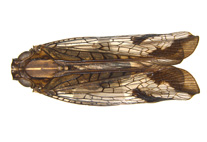Abstract
We describe two new species of hynobiid salamanders in the genus Onychodactylus from eastern Honshu, Japan, based on the morphological and genetic evidence. Onychodactylus intermedius sp. nov. is distributed in southern part of Tohoku District and northern Ibaraki and Niigata Prefectures, and was previously reported as S-Tohoku group. Onychodactylus intermedius belongs to the O. japonicus species complex, and differs from the other congeners in having relatively long tail, narrow head, short snout, 18 presacral vertebrae, and distinctly curved vomerine tooth series without gap. Onychodactylus fuscus sp. nov. is known from only four localities in Fukushima and Niigata Prefectures of Tohoku and Hokuriku Districts. It also belongs to the O. japonicus complex, but lacks the dorsal stripe, which is a diagnostic character of the species complex. In other characteristics, O. fuscus differs from the other congeners in having comparatively long tail, wide head and internarial space, shallowly curved vomerine tooth series with gap, and relatively few vomerine teeth. Both species described here breed in winter. Phylogenetically, the two new species are closely related to each other, forming a well-supported clade with O. tsukubaensis as their sister species. Onychodactylus intermedius sp. nov. is known to be parapatric with O. japonicus and O. nipponoborealis without hybridization, whereas O. fuscus sp. nov. is sympatric with O. japonicus at least in a single known locality, and analysis of microsatellite loci indicates they are reproductively isolated.

